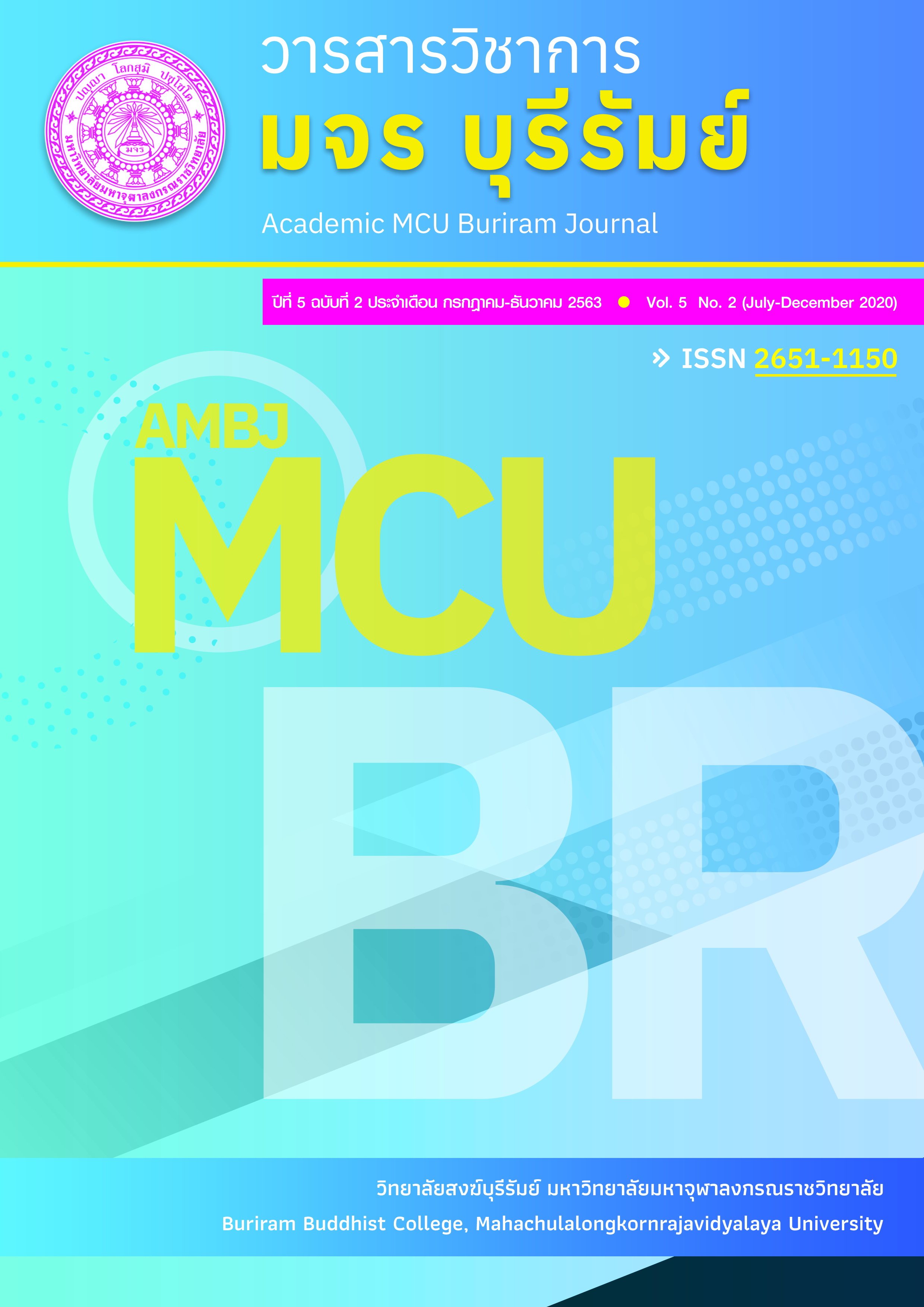The Self-Development according to the Four Foundations of Mindfulness
Keywords:
Development, Satipatthana 4Abstract
This academic article has the objective of 2 aspects are 1) to study about Satipatthana 4 in accordance with Buddhism, 2) to study about self-development by Satipatthana 4 in other words realizing form of visible object, sensation, mind and natural condition or depth realizing visible object, sensation, mind and natural condition. Consciousness to consider visible object, sensation, mind and natural condition to be free from all suffering. Practicing Sittipatthana that mindfulness as regards the body is demonstrate of practicing with consciousness by 4 postures as following walk, stand, sit and lay down. Mindfulness as regards feelings is focus on sensation, take such feeling. Mindfulness as regards thoughts is focus on the natural mind, realize the feeling and knowingly such feeling. The contemplation of mind-object, it is focus on natural condition including 5 categories are 5 obstacles, 5 Aggregates, 12 Bases, 7 Factors of Enlightenment and 4 Noble Truths.
Self-development has 4 aspects are 1) acting means focus on achieving with own perseverance, 2) self-development means must be regarded as a duty with consciousness to train oneself to progress in various charitable acts that will make a better life and good society it called Threefold Training, 3) Act with caution means do any acts by perseverance and 4) Self-sufficient means make freedom when achieve become an independent.
Self-development in accordance with Satippathana 4 can concluding as follows; contemplation of the body focus on perseverance, contemplation of sensation focus on as a duty with consciousness to train oneself to progress in various charitable acts, contemplation of mind focus on the act with caution, and contemplation of mind-object focus on self-sufficient and to be free.
References
มหาจุฬาลงกรณราชวิทยาลัย. (2539). พระไตรปิฎกภาษาไทย ฉบับมหาจุฬาลงกรณราชวิทยาลัย. กรุงเทพมหานคร: โรงพิมพ์มหาจุฬาลงกรณราชวิทยาลัย.
มหามกุฎราชวิทยาลัย. (2466). พระไตรปิฎกฉบับมหามกุฎราชวิทยาลัย. กรุงเทพมหานคร: โรงพิมพ์มหามกุฎราชวิทยาลัย.
ฉันทนา อุตสาหลักษณ์. (2549). พุทธปัญญา คู่มือการสร้างปัญญา. พิมพ์ครั้งที่ 2. กองทุนพิทักษ์ธรรมเผยแพร่. กรุงเทพมหานคร: บริษัท ธนธัชการพิมพ์.
_________. (2552). พุทธปัญญา คู่มือการสร้างปัญญา. พิมพ์ครั้งที่ 3. กรุงเทพมหานคร: บริษัท ธนธัชการพิมพ์ จำกัด.
นายแพทย์เอกชัย จุละจาริตต์. (2546). แก่นธรรม อริยสัจ 4. พิมพ์ครั้งที่ 3. กรุงเทพมหานคร: บริษัท เคล็ดไทย จำกัด.
พระธรรมปิฎก (ป.อ.ปยุตฺโต). (2539). พจนานุกรมพุทธศาสตร์ ฉบับประมวลศัพท์. พิมพ์ครั้งที่ 10. กรุงเทพมหานคร: บริษัท สหธรรมิก จำกัด.
พระพรหมคุณาภรณ์ (ป.อ.ปยุตฺโต). (2546). พจนานุกรมพุทธศาสตร์ ฉบับประมวลธรรม. พิมพ์ครั้งที่ 12. กรุงเทพมหานคร: บริษัท สหธรรมิก จำกัด.
พระโสภณมหาเถระ (มหาสีสยาดอ) รจนา, (2545).
สุชีพ ปุญญานุภาพ. (2539). พระไตรปิฎก ฉบับประชาชน. พิมพ์ครั้งที่ 16. กรุงเทพมหานคร: โรงพิมพ์มหามกุฏราชวิทยาลัย.
Downloads
Published
How to Cite
Issue
Section
License
ทัศนะและความคิดเห็นที่ปรากฏในบทความวารสารฉบับนี้ถือเป็นความรับผิดชอบของผู้เขียนบทความนั้น ไม่ถือเป็นทัศนะและความรับผิดชอบของบรรณาธิการ





